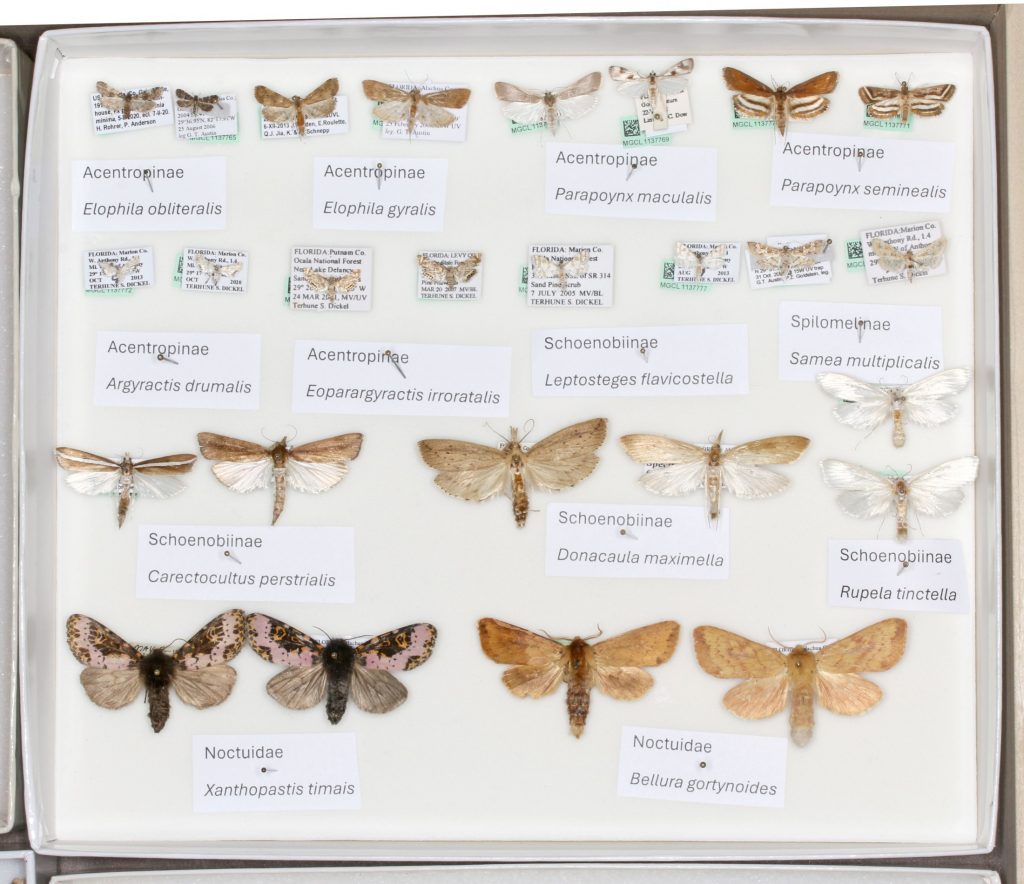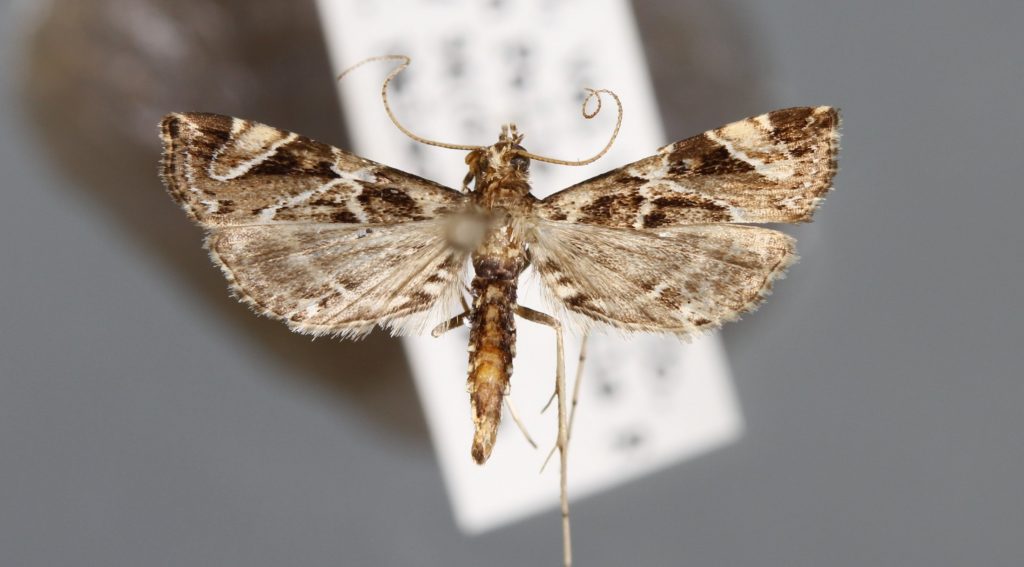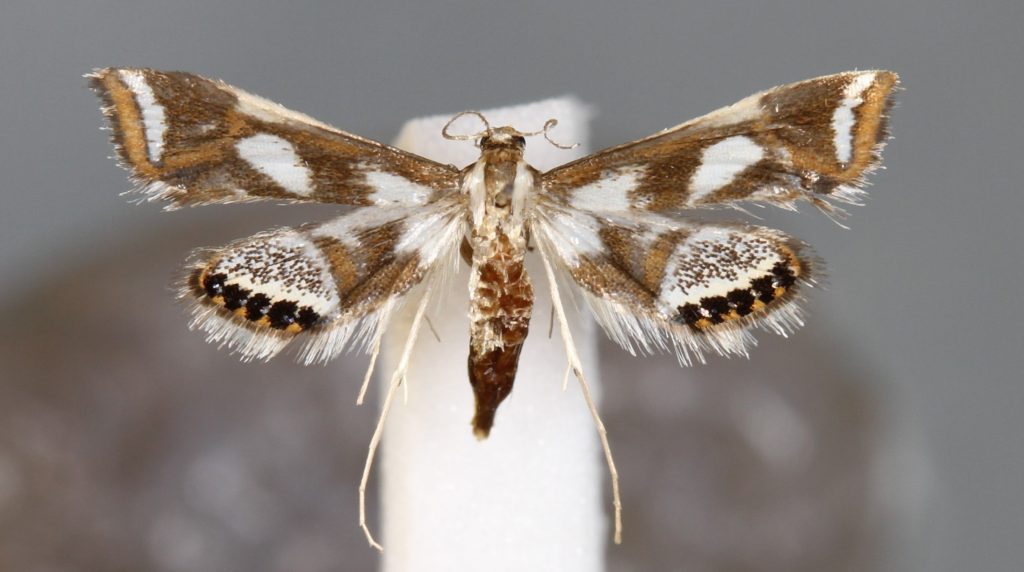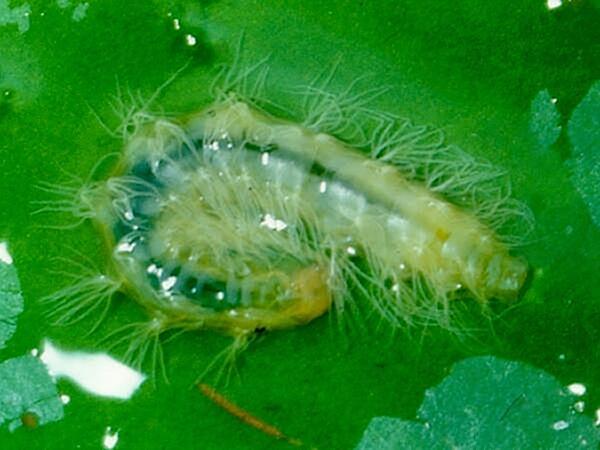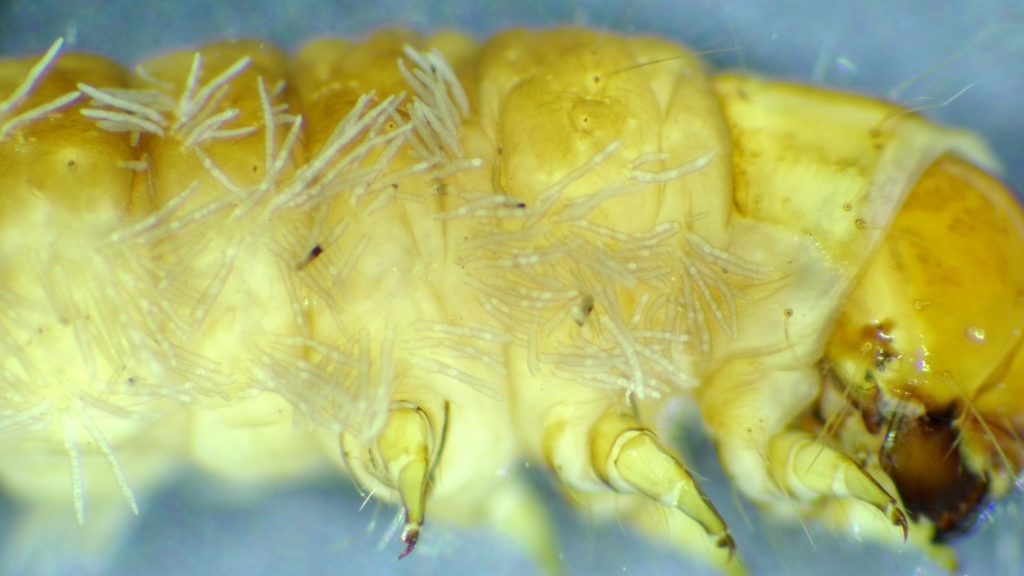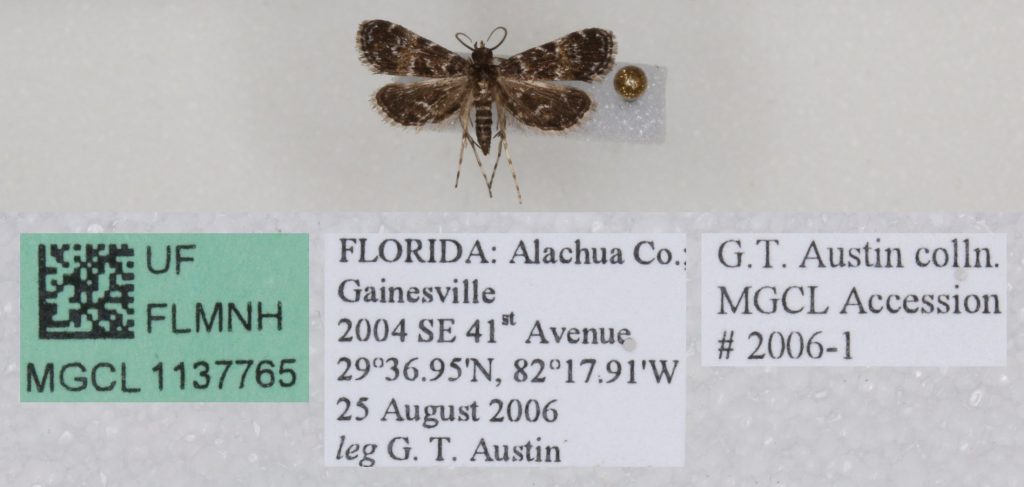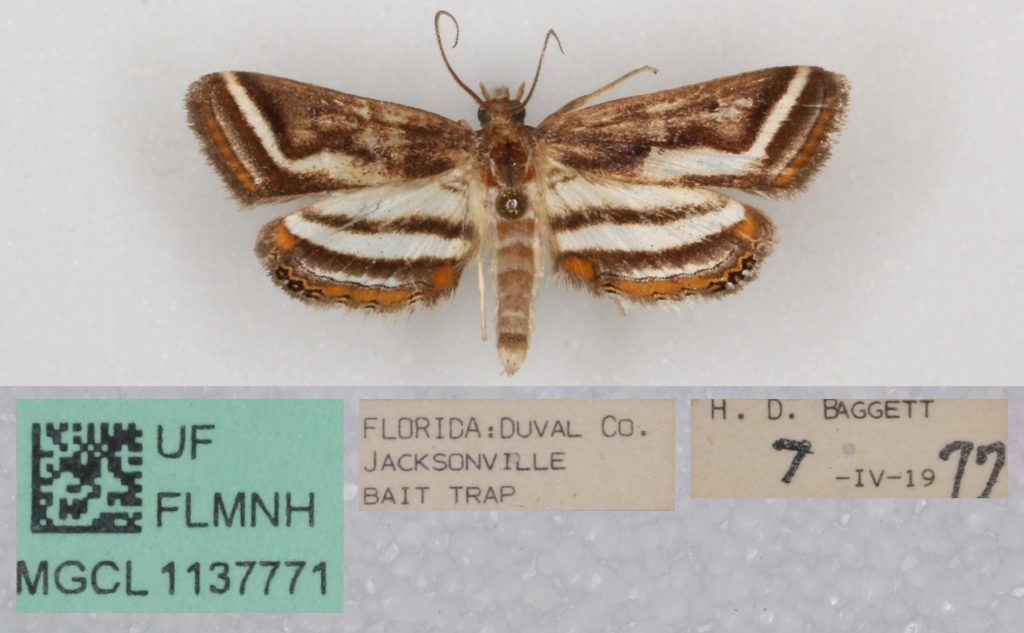People often encounter caterpillars in their gardens or walking along a nature trail. Most of us are not even aware that moth caterpillars can also be found in rivers, streams, lakes, or ponds, some living and feeding while completely submerged! These aquatic caterpillars have various adaptations and habits for surviving underwater. Some even have gills!
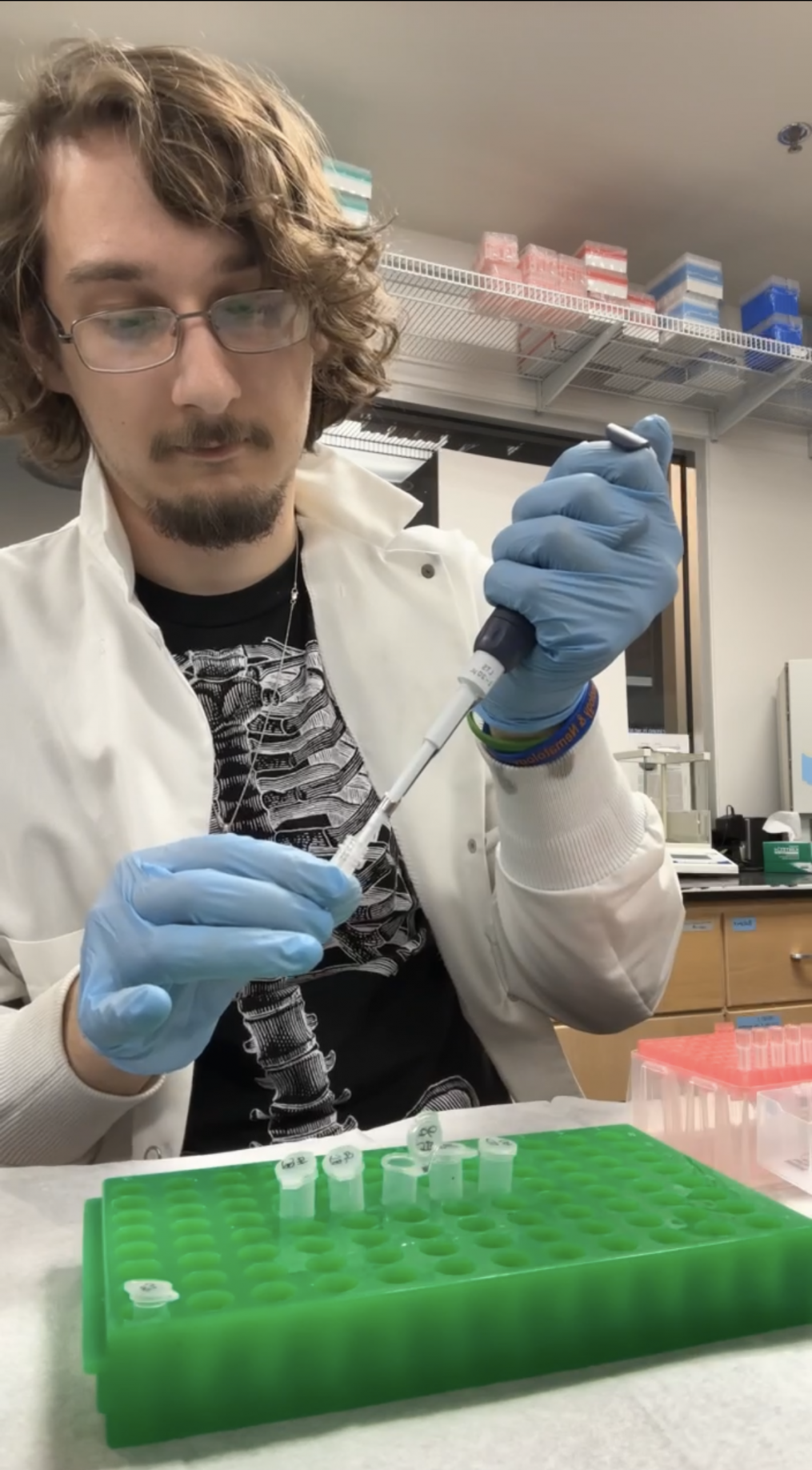
Meet Jacob Bethin, a master’s student who started his studies in August 2022 as a Graduate Research Assistant at the McGuire Center for Lepidoptera and Biodiversity. Jacob studies the systematics of the largest subfamily of aquatic moths, Acentropinae (family Crambidae). Jacob’s studies of these amazing insects have helped resolve taxonomic issues, but, just as importantly, have shed light on the large amount of information still to learn about the group. While the family Crambidae (snout moths) is, in general, commonly studied and quite well known, Acentropinae remain somewhat obscure, so much so that even entomologists are not always aware that aquatic moths exist. There are many research questions that can be asked about the group; Jacob chose to research their systematics and create a DNA-based phylogenetic tree to help understand acentropine relationships and evolution.
To do this, Jacob searched through more than 500 drawers of unidentified adult moths and sorted out approximately 3,000 acentropines. Once sorted to subfamily level, he then identified each to genus. This was done by comparing wing patterns and other morphological characteristics with those highlighted in dichotomous keys and comparing identified moths in the McGuire Center collections. Once the moths were identified, he selected specimens representing each genus which would be best for DNA extractions based on specimen age and condition.
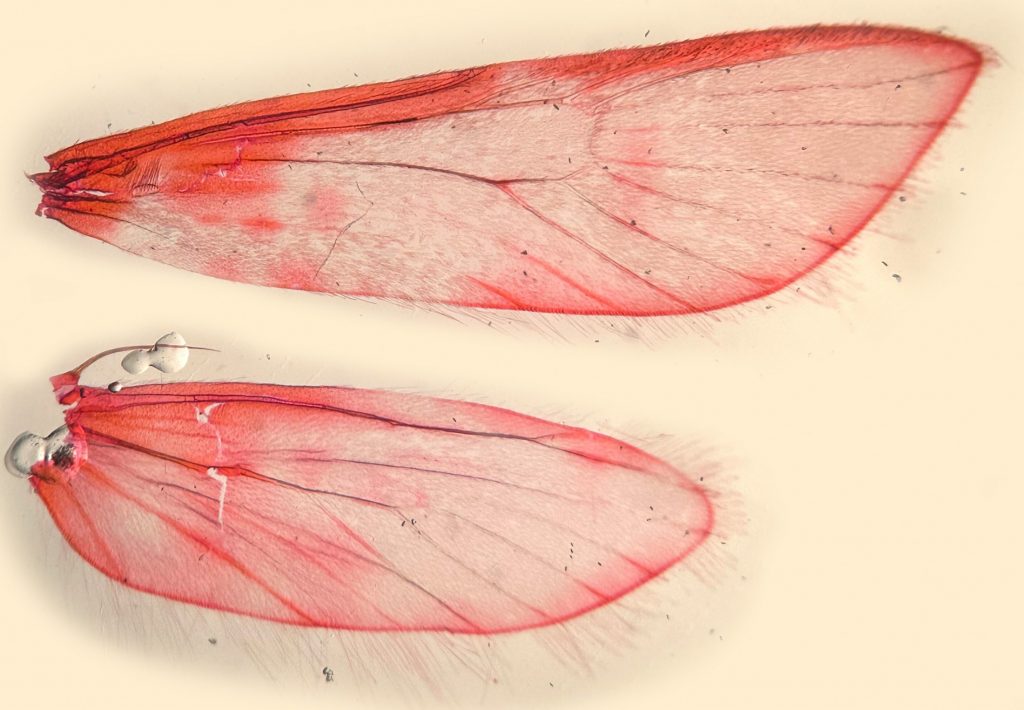
Instead of using tissue from a leg to extract DNA, which is a common method, Jacob removed and soaked the abdomen of each specimen in a lysis buffer. This method results in more, and sometimes better quality, DNA and the abdomens can later be dried and re-associated with the pinned specimens in the original collection drawer. Jacob submitted the DNA extracts to be sequenced at RAPiD Genomics. The resulting sequences were then cleaned and aligned for phylogenetic analysis.
Once a preliminary phylogenetic tree was established, Jacob studied the morphology of these moths, including genitalia and wing venation. To study wing venation, one pair of wings was removed and the scales carefully brushed off. The wings were stained using a special dye (Eosin Y), which colors the veins pink, and mounted on microscope slides. To examine the genitalia, abdomens were removed and rehydrated in a buffer solution. This softens the tissue to separate the “pelt” (exoskeleton of the abdomen) and the genitalia. Both the pelts and genitalia were stained and placed on slides, like the wings. The slide-mounted structures were compared to find similarities or differences that could confirm relationships seen in the DNA-based phylogenetic tree. Jacob also reviewed the scientific literature to find other traits, such as caterpillar morphology, that were included in previous descriptions. He compiled these morphological traits and used them to further support the results of his tree based on DNA.
Jacob’s project was inspired by his previous research as an undergraduate identifying by-catch (accidentally collected insects) on Podostemaceae (riverweed). He spent approximately three years studying these insects, which included aquatic Lepidoptera. This project eventually led to an internship at the Smithsonian National Museum of Natural History where he learned more about acentropine morphology, ecology, and life history from one of the world’s experts on the group, Dr. M. Alma Solis. Together with his mentors and collaborators, he published two papers on aquatic insects associated with Podostemaceae and discovered some new morphological traits for acentropine caterpillars including a membranous sac between the legs, a fully sclerotized prothoracic segment, and a tail-like appendage on the last abdominal segment.
When Jacob is not studying moths, he likes to bake, watch movies, and take care of his quails and axolotls. Jacob has also taken up salsa-dancing during his graduate studies, joining a competitive team that will perform at conferences across Florida.
To learn more about aquatic insects and see a beautiful display of some Florida species, please visit the Museum’s new permanent exhibit, Water Shapes Florida.
Publications
Bethin, J., M. A. Solis, and R. K. Krell. 2021. The undiscovered frontier of aquatic moth caterpillars on river weeds. The News of the Lepidopterists Society 63(3).
Bethin, J., R. K. Krell, and C. T. Philbrick. 2022. New Arthropod-Podostemaceae Associations in Central and South America. Zookeys 1129: 45
